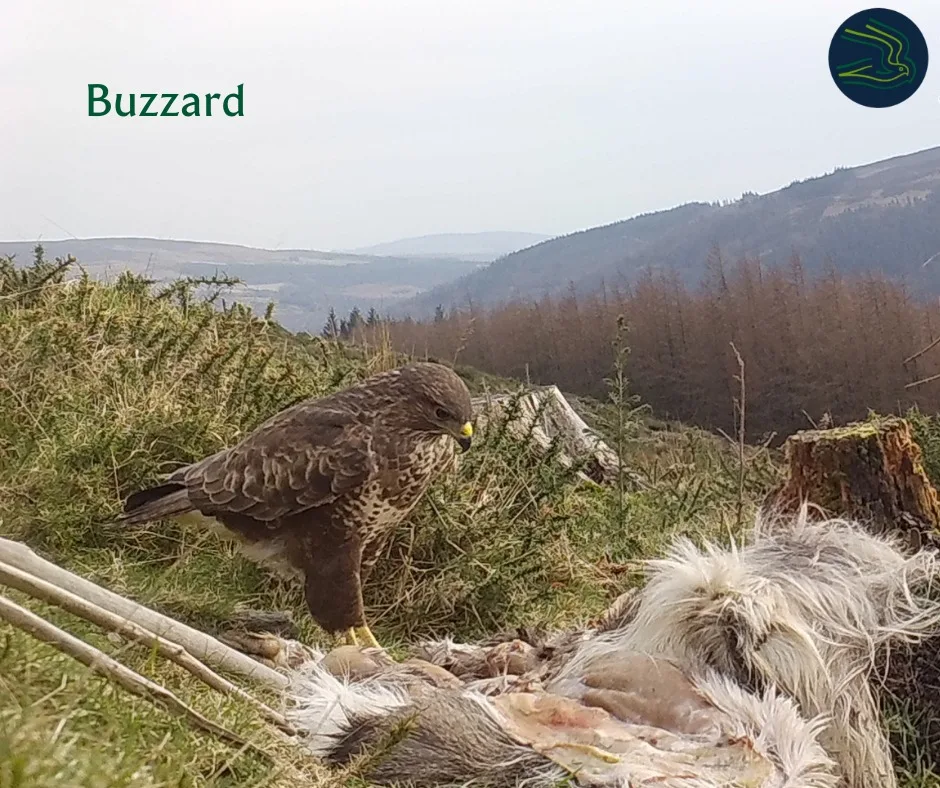Articles & Information, News & Updates
The importance of scavengers in the Wicklow mountains
Thousands of animals live in the Wicklow Mountains, collecting and storing nutrients from the foods they eat. When these animals die, the nutrients in their bodies are returned to the environment by various decomposers and become available to other flora and fauna. A host of species, from microbes and invertebrates to mammals and birds, work to decompose carcasses. Microbes and invertebrates are slow decomposers – it can take them years to completely decompose a carcass. In contrast, mammals and birds consume large amounts of carrion, rapidly returning the nutrients to the environment and reducing the abundance of pathogens.
Recently, staff at the Wicklow Mountains National Park placed a camera at a site of a goat and deer carcass. The images captured show the diversity of species that contribute to breaking down large carcasses.
The carcasses were mostly visited by buzzards, a generalist predator, meaning it eats a wide range of prey. Another generalist, the red kite, also fed from the carcass. Corvids are common visitors to carcasses, and four corvid species appear: raven, hooded crow, magpie, and jay.
Camera projects such as this provide insight into wildlife interactions. The images show that the buzzards and red kites usually fed alone; other birds usually did not visit the carcass while these birds were there, and the buzzards would even try to keep other buzzards away. Smaller birds, like the jay and magpie, only visited the carcass when the larger birds had left.
The only mammal to visit the carcasses was the red fox, which played an important role in breaking down the carcasses. The birds remove the flesh, but usually cannot break open the skeletal remains. Larger and stronger predators, like the fox, can pull the carcass apart, which makes the flesh within the torso, as well as the bones and marrow, more accessible.
Working together, the scavengers can cause the removal of most of a carcass within a few days.
